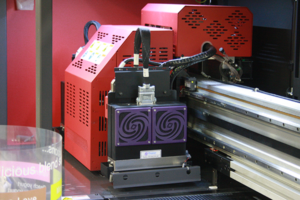






 It sounds like the Holy Grail, says EFI chief technology officer Doug Edwards as he says that the company plans to introduce a water based ink with the attributes of UV in 2022.
It sounds like the Holy Grail, says EFI chief technology officer Doug Edwards as he says that the company plans to introduce a water based ink with the attributes of UV in 2022.
EFI will roll out an aqueous ink in the next year that has the attributes of UV inks according to chief technology officer Doug Edwards. The reason we like UV inks is that they are pretty agnostic to the substrate that you are printing on. And we are now trying to get that feature set into an aqueous ink. Many markets for cost and environmental reasons, want to move in that direction, he says. Many people much prefer water based systems.
This includes the ceramics sector where it already offers a water based ink as an alternative to solvent and UV inks. In corrugated packaging a water based ink will unlock opportunities for food contact as well as indirect food contact applications, Edwards explains.
A water based ink should also be also less expensive than UV ink.
EFI has been working on this for many many years and it is now coming to fruition. We believe it’s a transformation technology, he says. It sounds like the Holy Grail, and to be honest, I think that it is.
EFI will not be first to market with a water based ink as the technology used by Kodak, Memjet and HP each enables aqueous inks. These are continuous inkjet from Kodak and thermal inkjet from HP and Memjet. Nor is aqueous inkjet unknown to the piezo printheads that EFI uses, but their use is restricted to paper and other suitable substrates and often with a priming coating.
Along with the ink, EFI plans to introduce 17 new products this year, not including upgrades to Fiery. It includes both shuttle head and single-pass technology. Edwards says that EFI will adapt the same platform for different applications. The design of its Nozomi press for corrugated for example was inspired by ceramics printing and has, in turn, inspired single pass display print and wood laminate printing. Edwards also mentions cartons and flexible packaging options for the future. “The reason that we can do this is that we have common platforms across the applications,” he says.
Opracowano na podstawie informacja portalu Print Business